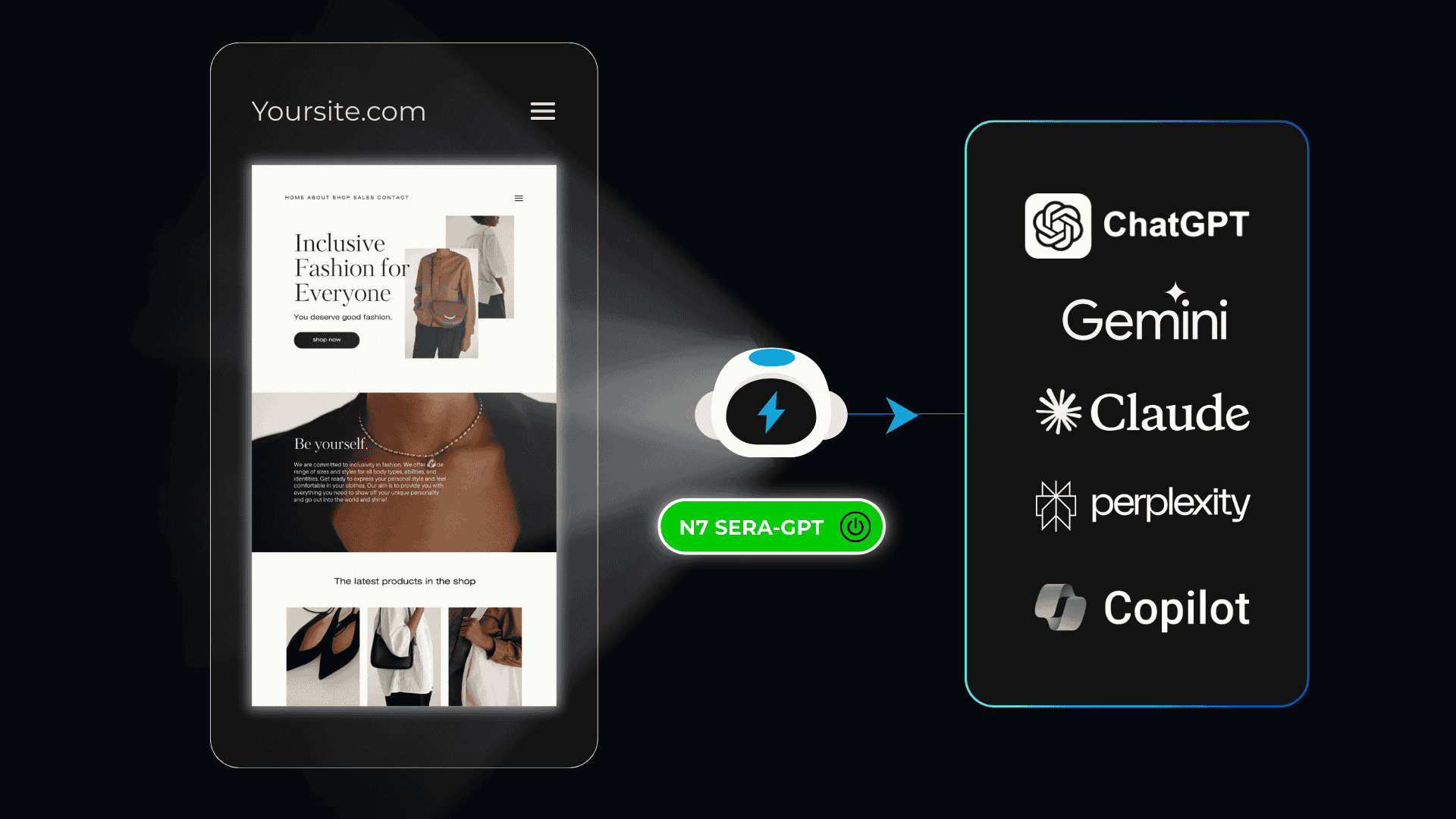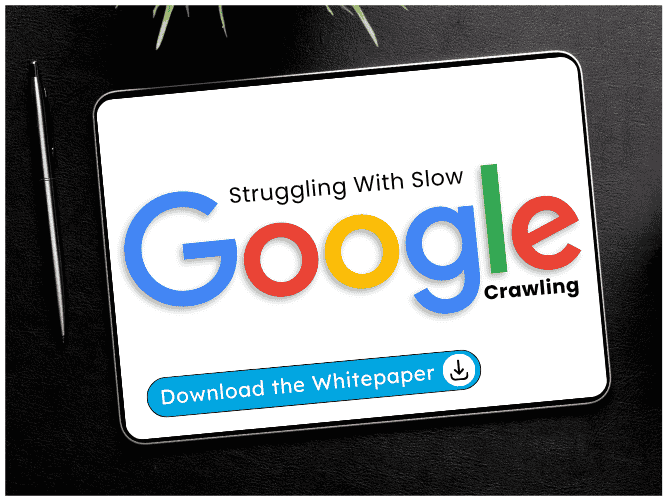LLM Search Optimization Guide for 2025: How to Rank in AI-Powered Search

TL;DR
- The “answer engines” (ChatGPT, Google AI Overviews, Perplexity, Brave) pick a handful of sources — not thousands. Your job isn’t to “rank”; it’s to be cited (or be the single answer).
- Give AI systems clean access (robots.txt), machine-readable product data (schema), and answer-ready content. Measure crawls, inclusion, and mentions monthly.
- Allow reputable AI crawlers (OpenAI, Perplexity, Common Crawl), and understand Google-Extended only governs Gemini training/grounding—not AI Overviews’ inclusion.
- Expect behavior shifts: AI Overviews is already at massive reach and compresses click-through; your brand must be present in the overview/answer.
- Build authority where LLMs look: credible sources, structured product/FAQ content, and authentic forum/UGC participation (yes, including Reddit).
Why is LLM Search Optimization Crucial?
Google’s AI Overviews (and AI Mode) are rolling out broadly; LLM answer engines like ChatGPT, Perplexity and Claude keep growing. The result: more queries yield one synthesized response with a few citations—meaning visibility consolidates to the “mentioned few.” If you’re not in that short list, the organic opportunity evaporates.
Compounding this: multiple studies show AI surfaces cite a different mix of sources than classic SEO—heavy on Reddit/UGC for some engines, Wikipedia for others. Optimizing for LLM search doesn’t mean copy-pasting your Google playbook.
How LLM Answer Engines Actually Pick Sources
- ChatGPT / OpenAI Search experiences
Uses OpenAI crawlers (e.g., ChatGPT-User when a user triggers browsing; OAI-SearchBot for search indexing). Access depends on your robots.txt and page quality. (OpenAI Platform)
- Google AI Overviews / AI Mode
Generated from Google’s index + AI layer. You can’t “opt out” of Overviews via Google-Extended; that token only controls Gemini training/grounding usage. Inclusion still relies on normal Search quality signals and structured clarity. (Google for Developers)
- Perplexity
Runs live web retrieval with its own crawler (PerplexityBot) and shows citations. Open access in robots.txt helps inclusion. (Perplexity, Perplexity AI)
- Common Crawl & the broader ecosystem
CCBot builds open web snapshots used across AI research/training. (commoncrawl.org)
The 5 Step Framework for LLM visibility
Step 1 — Crawlability & Controls
Make sure key pages are fetchable by Bingbot/Googlebot and reputable AI bots (OpenAI, Perplexity, CCBot). Validate access in server logs. Sample robots.txt (edit to your policy):
User-agent: *
Disallow: /admin/ /cart/ /checkout/ /internal-search
Sitemap: https://www.example.com/sitemap.xml
User-agent: GPTBot
Allow: /
User-agent: OAI-SearchBot
Allow: /
User-agent: PerplexityBot
Allow: /
User-agent: CCBot
Allow: /
Want to ensure your site is crawlable by all the AI bots? Explore SERA-GPT!
Step 2 — Answer-ready Content
Write pages that answer the questions shoppers ask AI: “Is it machine-washable?”, “Safe for 3-year-olds?”, “Under ₹1500?”. Add short Q&A blocks/subheads and comparison tables. Create buying guides like “Best breathable cotton sarees for humid climates” that internally link to product detail pages (PDPs).
Step 3 — Reliable Structure (Schema)
Implement JSON-LD for Product (price, availability, ratings), FAQPage, BreadcrumbList. This helps parsers turn your site into a database.
Step 4 — Evidence & Authority
Earn mentions where engines look: expert reviews, credible lists, and authentic UGC (Reddit/Quora). Target placements that LLMs cite disproportionately.
Step 5 — Speed & Experience
Core Web Vitals still matter—both for Google inclusion and as a quality proxy many engines respect. Treat performance as table stakes for being excerpted or summarized.
A practical 10-step checklist (eCommerce & D2C-specific)
- Set up access & verification: Google Search Console + Bing Webmaster Tools. Use URL submission and Crawl Control to ensure fast discovery without performance hits.
- Robots.txt & bot hygiene: Explicitly allow the AI crawlers you trust (OpenAI, Perplexity, CCBot). Monitor with logs or bot analytics.
- Site speed and clean HTML: Prioritize CLS/LCP/INP; reduce client-side rendering that hides content from fetchers.
- Schema everywhere it counts: Product, Offer, AggregateRating, Review, FAQPage. Keep price/availability fresh.
- Answer-centric PDPs: Add 6–10 customer-language Q&As per PDP (“Does it spill?”, “Return window?”). Link to care guides and sizing. (This mirrors the “conversation” LLMs try to resolve.)
- Evergreen buying guides + comparison hubs: Category “Best of” pages and seasonal guides that A) demonstrate expertise, B) cite sources, C) internal-link to PDPs.
- Authority building where LLMs shop for sources: Secure credible third-party mentions and seed authentic discussions in relevant subreddits/quora. Plan for Reddit to be a top citation source in some engines.
- Syndicate your catalog: Keep Google Merchant Center/Bing feeds pristine; align PDP content with feed attributes. (Perplexity often reference pages those ecosystems surface.)
- Audit inclusion monthly: Ask each engine targeted prompts, record whether your brand or PDP appears/cited, and log changes. Track crawler hits from GPTBot/OAI-SearchBot/PerplexityBot/CCBot.
- Govern the gray areas: Given recent allegations around scraping behavior from some players, adopt a written policy on which bots you permit and why, balancing reach with content protection.
What Metrics to Measure & Optimize for your D2C Brand
Still measuring the brand visibility for GPT searches is a black-box. These are some of the important metrics which you can start tracking manually or with the help of tools that we have called out in the list.
- Answer Inclusion Rate (a.k.a. LLM Mention Share) - % of target prompts where your brand or PDP is named/cited in AI answers.
- Citation Share of Voice (C-SOV) - Your share of all citations in an answer versus competitors.
- Source Footprint & Authority - Count and quality of third-party pages LLMs frequently cite that also mention/link to you (buying guides, expert lists, credible forums).
How to measure: Ahrefs/Semrush/Moz (referring domains, Top pages)
- Crawler Access & Coverage (AI Bots)
What it shows: Whether reputable AI crawlers reach key PDPs/category hubs.
How to measure: Use tools such as SERA-GPT to ensure you website is being crawled by AI Bots to show up in AI recommendations. Check server/WAF logs via your CDN; filter by GPTBot, OAI-SearchBot, PerplexityBot, CCBot. Validate robots.txt with Screaming Frog/Sitebulb “List Mode.”
- Speed & Renderability (Core Web Vitals)
What it shows: User-centric performance signals LLMs and search systems treat as quality proxies (LCP, INP, CLS).
How to measure: Search Console CWV report
- PageSpeed Insights/Lighthouse CI for lab, Web-Vitals JS in GA4; Real user monitoring tools like N7 RDX for continuous tracking.
- Answer-Surface Traffic & Assisted Conversions
What it shows: Sessions and revenue influenced by pages that AI answers often cite (e.g., “Best X” articles, comparison guides, subreddit threads).
How to measure: GA4 (Referrals + Landing pages + Assisted conversions), UTMs on PR/outreach placements; maintain a watchlist of commonly cited referrers.
- Prompt Coverage & Content Gaps
What it shows: Share of high-intent, conversational questions that your site can answer (on PDPs/FAQs/guides).
How to measure: Build a master question set via ChatGPT, AlsoAsked/AnswerThePublic, Semrush Topic Research; map each question to an on-site URL (or backlog) in a spreadsheet or Jira/Notion.
- Catalog/Feed Parity & Freshness
What it shows: Consistency of price/availability between PDPs, structured data, and product feeds (a common LLM failure point).
How to measure: Google Merchant Center diagnostics
Prompts to audit your brand’s LLM presence (copy/paste)
- “Best [your category] under ₹ / $ price—cite sources.”
- “Which [your niche] brands ship to [country] fastest?”
- “Is [yourbrand.com] a good place to buy [product]? Pros & cons?”
- “Compare [your product] vs [competitor]—be specific about materials, return policies, and care.”
Log whether you’re cited/mentioned in these results
Note for CMOs/Marketing Leads of eCommerce & D2C brands to win the AI Recommendations
Treat AI answer engines like Google’s AI Overviews, ChatGPT, Perplexity, as a distinct acquisition channel with its own KPIs, budget, and content ops. Make sure to create answer-ready PDPs and entity-dense buying guides that LLMs can confidently excerpt, supported by authority earned where these systems actually look: credible “best of” lists, expert reviews, and authentic UGC communities (because not all links are equal in AI results). Operationally, enforce access hygiene for reputable crawlers (GPTBot, OAI-SearchBot, PerplexityBot), monitor inclusion monthly the way you track indexation, and keep product feeds and schema continuously fresh. Finally, because norms are shifting fast, you should maintain a pragmatic, written bot policy that balances discovery with content protection—and revisit it quarterly as Google, OpenAI, and the broader ecosystem evolve.
Closing thought
In classic SEO, being on Page 1 was the goal. In AI search, the goal is starker: be the answer—or be invisible. The brands that win in AI recommendations will look like the brands that help: fast pages, structured data, honest comparisons, and content written in the customer’s language. That’s GEO in practice.


.png)

